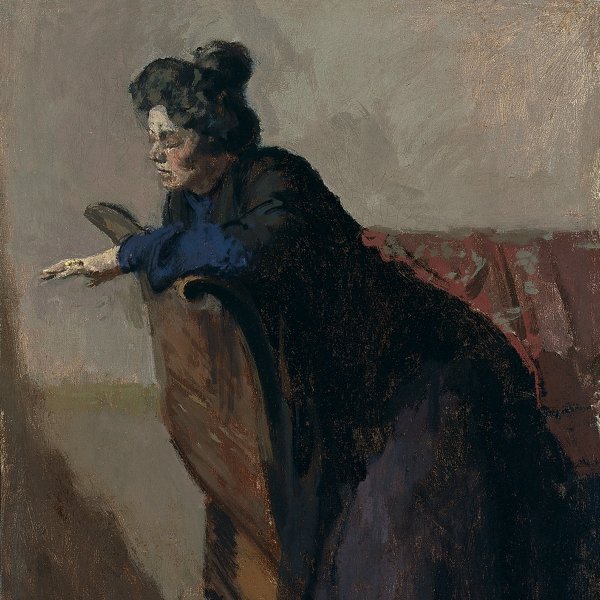Walter Sickert
Munich, 1860-Bathampton, 1942
Walter Richard Sickert is held to be one of the most influential painters on the British scene of the first decades of the twentieth century. His works may be considered the point of departure of modern trends in figurative painting in Great Britain. Born into a family of artists of Danish origin, he emigrated to England with his family in 1868. He was an actor for few years, before he began to study painting at the Slade School of Art in London in 1881, and a few months later became James Whistler’s disciple. After making the acquaintance of Edgar Degas in Paris in 1883 and meeting him again in Dieppe during the summer of 1885, he returned to London, where he became interested in horse races, circus scenes and, later on, music-halls. The influence of Degas is evident in all these works.
Sickert joined the New English Art Club in 1888 and was involved in organising the London Impressionists Exhibition in 1889. During these years he attempted unsuccessfully to make a name for himself as a portrait painter and eventually, in 1898, he moved to Dieppe, where he lived until 1905 and returned after the First World War ended. During this period, in which he concentrated chiefly on landscape, he visited Venice on three occasions. On the last of these trips, made in 1903–4, in addition to reproducing the city’s architecture, he began to depict austere indoor scenes in which the subject was one or two women. On returning to London in 1905 he became the principal artistic link of the time between France and Britain. In 1911 he came to lead the Camden Town Group. He taught at Rowlandson House in Hampstead (1910–14) and at the Westminster Technical Institute (1908–18). From the 1920s onwards photographs began to replace drawings as the bases of his paintings, as a result of which he no longer relied on commissions and was able to execute portraits of famous people.
Sickert joined the New English Art Club in 1888 and was involved in organising the London Impressionists Exhibition in 1889. During these years he attempted unsuccessfully to make a name for himself as a portrait painter and eventually, in 1898, he moved to Dieppe, where he lived until 1905 and returned after the First World War ended. During this period, in which he concentrated chiefly on landscape, he visited Venice on three occasions. On the last of these trips, made in 1903–4, in addition to reproducing the city’s architecture, he began to depict austere indoor scenes in which the subject was one or two women. On returning to London in 1905 he became the principal artistic link of the time between France and Britain. In 1911 he came to lead the Camden Town Group. He taught at Rowlandson House in Hampstead (1910–14) and at the Westminster Technical Institute (1908–18). From the 1920s onwards photographs began to replace drawings as the bases of his paintings, as a result of which he no longer relied on commissions and was able to execute portraits of famous people.





